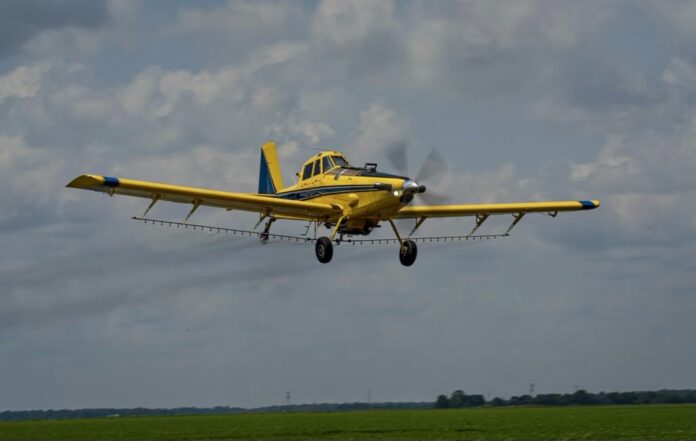Surprisingly enough, successful ag flying is not so much dependent upon precise aircraft handling, although that is a huge priority. Instead, it is in making safe and effective decisions in dealing with the issues an ag pilot faces on every flight.
To that end, one phrase I recall from an ‘old timer’ sticks in my mind after many years. If you don’t know, you don’t go. If you aren’t sure your application will be safe and effective, it’s time to open the hangar doors and call it a day. Knowledge is one of the basic foundations of safe flying anywhere, particularly in the low-level world of ag flying, and the more you know, the safer you will be. On the flip side, not knowing something can quickly turn into a real problem.
When you read accident and incident reports, it is not surprising that many of us have had similar experiences that narrowly escaped being on those reports by seemingly the luck of the draw. The following examples highlight some instances where knowledge saved my bacon, and a lack of knowledge could have made for a challenging day in the saddle.
Don’t Attempt the Impossible
I remember one work order passed up to me while reloading, detailing a fifteen-acre triangular field surrounded by tall pine trees on all sides, with a power line running through the middle. My first reaction was that it was a bit of horseplay on the part of the ground crew. Not so, said the mixer/loader, as the farmer had told him he had it treated by air the previous year.
It sure had me perplexed. I was flying an Air Tractor 401 at the time and politely declined the work order, saying jokingly that I would finish it that evening with a backpack sprayer, as I didn’t think we could even get into the field with our ground sprayer with its 90-foot boom width.
After completing the day’s operations, I asked a couple of the other pilots about the work order. It had been treated by air the year before but by a helicopter operator. Even given the additional capabilities of the rotary wing machine, I would still prefer the ground option.
Don’t Believe All You Hear
Part of the ag flying business is working from remote strips, often a considerable distance from the home base. That brings with it a lot of unknowns, including airstrip configuration, density altitude, hazards to ag operations, standard operating procedures, and so on.
I’ve found that one of the biggest unknowns is directly related to the remote airstrip itself. How long, how wide, and what the surface is like. I remember getting a call to head off to a farm strip about 50 miles from home base. I called the farmer beforehand and asked for some information on the strip. “Runs directly east-west, three thousand feet long, 45 feet wide, nice grass surface, been using it for years”, said the farmer. “You’ll be pleased.”
One would think that would be sufficient, and I accepted the details at face value. That was a big mistake on my part. Upon arrival at the remote strip, several items immediately got my attention. First of all, the grass was about a foot tall. Second, the runway may have been 3,000 feet long, but about halfway down, a small stream was running across the strip that had recently come to life, requiring a full inspection before assessing it as a hazard. And the 45-foot width? I suppose that would be true if you counted the centreline of about 20 feet with dangerously steep slopes on each side.
As luck would have it, there was a gravel road near the farmer’s strip, a full 40 feet wide and a two-mile length with no obstructions, all more than enough to make this cowboy happy.
As a footnote, the farmer had a Piper Cub he flew off the strip, which he used as a yardstick when it came to runway suitability. In the future, when faced with a new location, I specified that if the owner felt comfortable having two full grain trucks pass head-on at 50 mph, the strip width should be fine.
Strain Gauges
Whatever the machine, various gauges help the operator keep the equipment operating within safe parameters. Temperatures, pressures, RPM, etc. All of these are critically important to safe operations. To that point, I had the experience of ferrying a Thrush powered by a Garrett turbine from the point of sale to its new owner. I was unfamiliar with Garrett powerplants, notably requiring a fuel enrichment switch to assist engine acceleration during startup. The use of that switch depended upon monitoring the turbine RPM gauge.
The problem was the engine RPM gauge was inoperative. The past owner was quite surprised, and as a workaround suggested, you just had to listen to the engine during startup, and you could hear when the starting cycle was beginning to hesitate and needed a shot from the fuel enrichment switch. He demonstrated a successful start doing just that.
Garrett’s are very sensitive on startup to over temps, and I felt extremely uncomfortable basing a successful flight on my minimal experience with this powerplant. The old timer’s quip, “If you don’t know, you don’t go,” spared me the possibility of cooking an engine. Luckily a new gauge was found and installed in short order.
Speaking of gauges, I wish someone would invent a personal strain gauge to indicate whether a pilot is too fatigued or stressed to fly safely. While we wait for the medical community to come up with this stress-o-meter, we will have to rely on a comprehensive education on assessing and dealing with excessive stress.
As a starter, remember that preventive maintenance for pilots parallels that for aircraft. Taking care of things before they go wrong is cheaper and safer than dealing with an accident or incident. Remember that old-timer advice, Whether you are unsure of the weather, the aircraft, or your physical and mental well-being.
If you don’t know, you don’t go.





